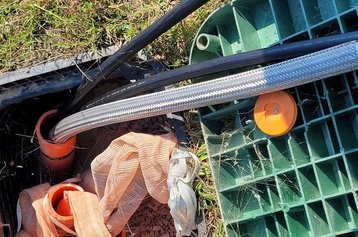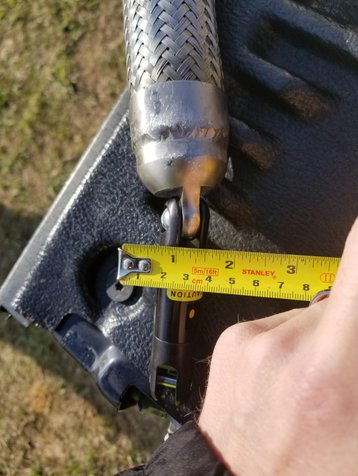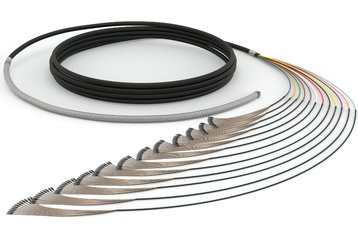Building out data center campuses can take more time and money than anticipated, so in the current environment, with demand for data center services strong and only set to get stronger, while staff shortages beset every sector of industry, builders are looking for any way they can to speed-up construction, while sticking as close as possible to budgets.
One of the thorniest challenges for hyperscale data center campus builders is installing the communications cabling quickly, efficiently and correctly, ensuring each of the data center buildings is fully connected with as much bandwidth as possible so that they can operate as one, hyper-efficient, hyperscale unit.
However, that’s easier said than done because the industry doesn’t necessarily make it easy, especially for the largest installations. For example, standard data center interconnect ducts are typically four-inches wide. This is not a problem for pulling through unconnectorized cables, but for very high fiber count cables, such as 1,728 fibers and more, the subsequent splicing and testing is a painful, slow and, ultimately, costly process that can take weeks to perform.
Furthermore, organizations only have so much duct space they can utilize. But when you get these very high fiber count cables and you put connectors on them, you need a pulling grip to protect the connectors and pull the cable through,” says Scott Gregg, a marketing manager at Corning Optical Communications.
“Well, with a very high fibre count cable and traditional connectorized MPO or LC trunk solutions, the pulling grip would be so big that it wouldn't even fit through the duct.”
However, it’s not just about the cable, adds Angela Lambert, data center market development manager at Corning. “When you add the splicing, and the set-up that the contractors have to go through to splice these very high fiber count cables to keep them managed and organised, it’s very labor intensive and it takes a significant amount of time. Once you’ve pulled it to the other end you’ve got to route this massive amount of fiber into the housing, and manage the splicing,” she says.
At the end of it all, specialist technicians will need to manage hundreds of numbered ribbons, and splice the right fibers while ensuring that they have the alignment just right – ribbon to ribbon between the two ends of the cables they’re connecting together.
“They have to make sure they don’t ‘rotate’ the ribbon when they splice them together, and when they splice they don’t immediately know that they’ve got a ‘good’ splice – so then they need to go back and test it,” says Lambert. “Then, they might only find out during testing – sometimes weeks later – that they had a bad splice and have to go back, locate the right one, break the splice and then resplice it” It’s very labor intensive and you don’t know whether it’s been done correctly until later on.”
A typical hyperscale deployment, she adds, might require deploying more than 10,000 fibers – three cables in total. Installing, pulling, splicing and connecting all those cables will take around six weeks.
The solution, she suggests, is connectorized trunk cables that don’t require splicing, with a new design of 24 fiber connector, called the Fast-Track MTP® Connector, which uses a two-inch pulling grip – as opposed to the standard 3.5-inch grip – that enables three 3,456-fiber trunk cables to be pulled through a tight four-inch conduit.
The connector, meanwhile, can still mate with a normal MTP connector, while the grip is waterproof and can withstand up to 600 pounds (270 kilos) of pulling tension. Above all, perhaps, no special installation practices or equipment is required to use the new technology, and it eliminates the need for fusion splicers, cleavers, and splice technicians (and their training).
Not only that, Corning EDGE Rapid Connect indoor trunks can take connectivity anywhere high-data rates are required.
Corning believes that it can slash the time it takes to install such cables by up to 70 per cent. “It basically takes what used to be a six week project deployment down to two weeks,” says Lambert. “Even when you have a very skilled labor force, it’s so challenging to do all the splicing; it’s so time consuming and very easy to misalign a splice or to splice the wrong ribbon.
“But all that lengthy troubleshooting time can simply be taken away. There’s much less testing. It streamlines the entire process.”
One issue that contractors are left to grapple with, adds Lambert, is accurate measurement. The connectorized trunk cables are made to order and measurements therefore have to be accurate.
“Because length of the cable is key, we do offer services to contractors to effectively get an accurate length measurement, so that there’s a ‘comfort factor’ that they’ve ordered the right product.
Despite the concerns before the project started, she adds, early adopters haven’t reported any problems. “The contractors we worked with were initially concerned about this, but it turned out to be very simple. They managed it very easily and very comfortably,” she says.
More...
-
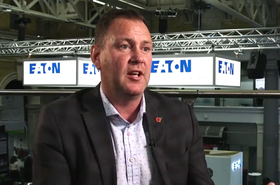
Event News Corning's Anthony Robinson looks at the 2020 landscape
Anthony Robinson discusses the future of the industry, from hyperscale to Edge data centers and the impact speed and bandwidth demand have on network infrastructure
-
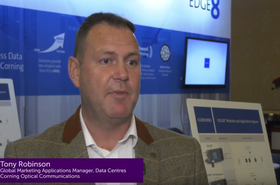
Tony Robinson, Corning, at DCD>Jakarta
At DCD>Jakarta we talk to Tony Robinson, Global Marketing Applications Manager, Data Centres, Corning
-
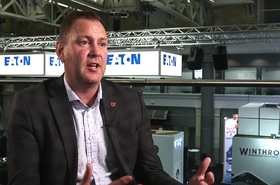
Corning's Anthony Robinson on how to migrate to 400GbE
Anthony Robinson explains the development in transceivers, parallel optics and other network technologies to deal with exponential bandwidth growth within the data center at DCD>London 2018.

